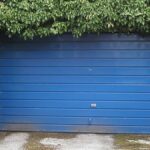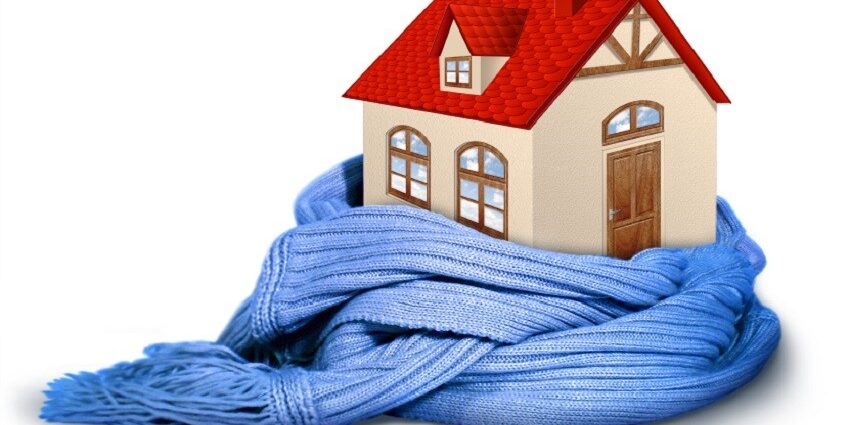Are you considering insulating your house but unsure about the average cost? Insulation is crucial in maintaining a comfortable indoor environment while reducing energy consumption. In this article, we will explore the various factors affecting the cost of insulating a house and provide valuable insights to make an informed decision. From different types of insulation to their costs per square foot, we’ve covered you with average cost to insulate a house.
Why is Insulation Important?
Insulation acts as a barrier that prevents heat exchange between the interior and exterior of your house. It helps maintain a consistent temperature inside, reducing the reliance on heating and cooling systems. Proper insulation also minimizes the transfer of noise, improves indoor air quality, and enhances the overall energy efficiency of your home.
Factors Affecting Insulation Costs
Several factors influence the cost of insulating a house. Understanding these factors will give you a better idea of what to expect when budgeting for your insulation project.
Type of Insulation Material
The type of insulation material you choose significantly impacts the cost. Different materials have varying prices per square foot. Some popular options include fiberglass, spray foam, cellulose, foam board, and blown-in insulation. Each material has its unique characteristics, advantages, and costs.
Size of the House
The size of your house plays a crucial role in determining the overall cost. Larger houses require more insulation material, resulting in higher expenses. Conversely, smaller homes tend to have lower insulation costs.
Accessibility and Complexity
The accessibility and complexity of your house also affect the cost. The installation process may require more time and effort if your house has challenging architectural features, tight spaces, or difficult-to-reach areas. This can impact the overall cost of the project.
Labor Costs
Labor costs can vary based on your location and the complexity of the insulation project. Hiring professional contractors to install the insulation ensures proper installation and can save you time and effort. However, it’s important to factor in the labor costs when budgeting for your project.
Types of Insulation
Before delving into the costs, let’s explore the different insulation materials commonly used in residential properties.
Fiberglass Insulation
Fiberglass insulation is one of the most popular and cost-effective options available. It consists of fine glass fibers that trap air, providing effective thermal insulation. Fiberglass insulation is easy to install and comes in batts or rolls.
Spray Foam Insulation
Spray foam insulation is a versatile option that expands upon application, filling gaps and creating an airtight seal. It provides excellent thermal and sound insulation properties. While spray foam insulation costs more than fiberglass, its superior performance often justifies the investment.
Cellulose Insulation
Made from recycled paper fibers, cellulose insulation is an eco-friendly option that offers good thermal insulation. It is commonly used in attics and walls. Cellulose insulation is cost-effective and has fire-retardant properties.
Foam Board Insulation
Foam board insulation, also known as rigid insulation, is a durable option that provides high thermal resistance. It comes in rigid panels made from materials like polystyrene or polyisocyanurate. Foam board insulation is commonly used in basement walls, exterior sheathing, and foundation insulation.
Blown-In Insulation
Blown-in insulation involves blowing loose insulation materials into cavities or attics using specialized equipment. It provides excellent coverage and is ideal for hard-to-reach areas. Common blown-in insulation materials include fiberglass, cellulose, and mineral wool.
Best Insulation for Your House
Choosing the best insulation for your house depends on various factors such as your budget, climate, and specific requirements. Consulting with a professional insulation contractor can help you determine the most suitable option for your home.
Average Cost to Insulate a House
Now let’s dive into the average costs associated with house insulation. It’s important to note that these costs can vary depending on the factors mentioned earlier.
Insulation Cost per Square Foot
On average, the cost of insulation per square foot ranges from $1.50 to $3.50. However, keep in mind that this is just an estimate, and the actual cost may differ based on the insulation material and other project-specific factors.
Cost to Insulate an Attic
Insulating an attic is crucial as it helps prevent heat loss in winter and heat gain in summer. The cost to insulate an attic typically ranges from $1,500 to $2,500, considering the insulation material and attic size.
Wall Insulation Cost
Insulating walls improves energy efficiency and reduces noise transmission. The cost of wall insulation varies depending on factors such as the type of insulation and wall construction. On average, you can expect to pay around $2,000 to $4,000 for wall insulation.
Cost Breakdown for Different Insulation Materials
To provide you with a better understanding, let’s break down the average costs for different insulation materials per 1,000 square feet of coverage.
Fiberglass Insulation Cost
Fiberglass insulation typically costs between $800 and $1,500 per 1,000 square feet. It is a cost-effective option that offers reliable thermal insulation.
Spray Foam Insulation Cost
Spray foam insulation is relatively more expensive, ranging from $1,500 to $3,000 per 1,000 square feet. However, its superior performance and energy-saving benefits make it a worthwhile investment for many homeowners.
Cellulose Insulation Cost
Cellulose insulation is a cost-effective option, with prices ranging from $800 to $1,500 per 1,000 square feet. It offers good thermal insulation and is made from recycled materials.
Foam Board Insulation Cost
Foam board insulation typically costs between $1,000 and $2,500 per 1,000 square feet. It provides excellent thermal resistance and is often used in specific areas like basements and foundations.
Blown-In Insulation Cost
The cost of blown-in insulation ranges from $1,000 to $2,000 per 1,000 square feet. This type of insulation is ideal for attics and hard-to-reach areas, ensuring complete coverage and efficient thermal insulation.
How to Insulate a House: DIY vs. Professional Installation
When it comes to insulating your house, you have the option of tackling the project yourself or hiring professional contractors. While a DIY approach may seem cost-effective, it’s crucial to consider the complexity of the task and the importance of proper insulation installation.
DIY insulation installation requires adequate knowledge, skills, and the right tools. Any mistakes in the process can lead to inefficiency and compromised insulation performance. It’s recommended to consult with professionals to assess your insulation needs and ensure a quality installation.
Professional insulation installation ensures proper coverage, energy efficiency, and adherence to building codes. The cost of professional installation varies depending on the size and complexity of the project. On average, you can expect to pay between $2,000 and $5,000 for professional insulation installation in a typical house.
Conclusion
Insulating your house is a valuable investment that improves energy efficiency, comfort, and cost savings. The average cost to insulate a house depends on various factors, including the type of insulation material, size of the house, complexity, and labor costs. Consider consulting with insulation professionals to assess your specific needs and determine the best insulation solution for your home.
By insulating your house effectively, you can enjoy a comfortable indoor environment, reduce energy consumption, and contribute to a more sustainable future.











